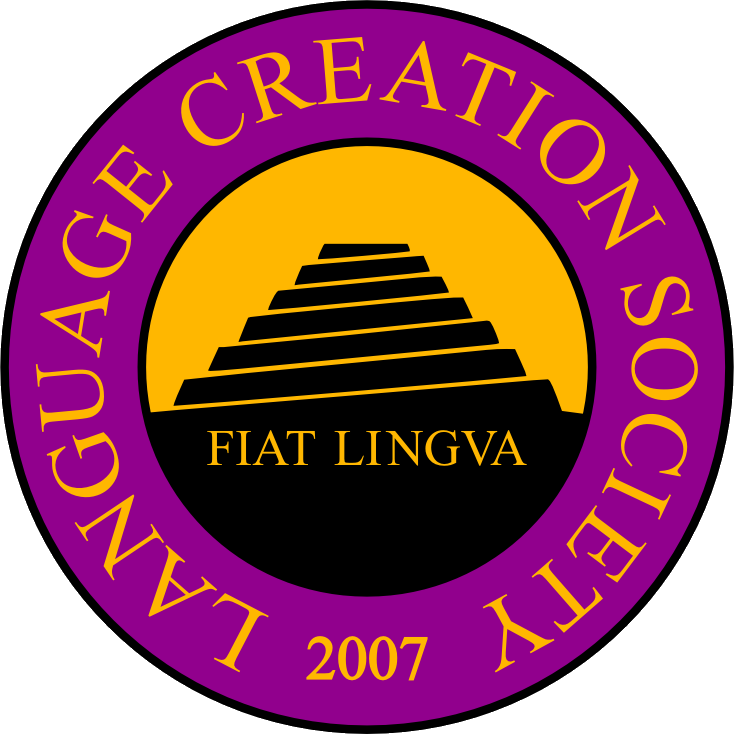LCC6 Speakers
 Bettina Beinhoff |
Attitudes towards Conlangs and Natlangs – a ComparisonThis talk is based on an experiment I ran at the science fiction convention in London last year (Loncon3). In this experiment, participants listened to a number of conlangs and natlangs and rated them on 6 traits (pertaining to the perceived level of pleasentness, friendliness, education, peacefulness, familiarity and naturalness). Due to the nature of the data collection session, participants were from a variety of backgrounds (though the majority had English as their first language) with highly varying degrees of knowledge of languages other than English. One hundred of these data sets were included in the data analysis. In this talk I will present how conlangs compare to natlangs regarding how they are perceived on each of the above traits. I will also examine possible differences between participant groups based on their knowledge of other languages and their first language(s). The results suggest that for some of the traits there is not much difference between the ratings for conlangs and natlangs, rather, the perceived familiarity seems to have a bigger influence. |
| Dr. Bettina Beinhoff is a Senior Lecturer at Anglia Ruskin University, Cambridge (UK). Her main research interests are in the fields of sociolinguistics and second language acquisition. She has worked extensively on attitudes towards accents of English and has recently started research into the sociolinguistics of conlangs – a line of investigation which she is keen to develop further. Bettina has not created any languages yet, but hopes to find inspiration for her first conlang at LCC6. | |
 Pete Bleackley |
When is a Case not a Case? Adventures in Noun MorphologyCase is a familiar method of marking the role of a noun – so much so that it risks becoming over-familiar. How do you avoid creating a case system that looks like every other case system. This talk explores some alternatives, with examples from a number of conlangs and natlangs. |
| Pete Bleackley started conlanging seriously in 2003, although he had dabbled a bit before that. He is the creator of Khangaþyagon and iljena. He lives in Horsham with his wife and two children (which is why we’re having the conference here), and is an Associate Editor at “Speculative Grammarian”. | |
 Tony Harris and Jim Hopkins |
Organic Conlanging Through Stability and ImmersionIn this presentation Jim Hopkins, creator of Itlani, will share his tips and techniques for recording, learning, and living the Language of your Soul. He will discuss the need for finding and ensuring stability in your language’s vocabulary and structure to facilitate easier learning, and how to immerse yourself in your language for mental and emotional engagement, even though you aren’t living full time among native speakers. The presentation will be done entirely in the Itlani language, with interpretation into English by Tony Harris. |
| James E. Hopkins received a BA in French from Hofstra University in 1974 and an MS in Metaphysics from the American Institute of Holistic Theology in 1998. He is a published poet and novelist. His first book of poetry Eden’s Day was published in 2008. His first novel, Circle of the Lantern, featuring many of his conlangs, was just rencently released in February 2015. He has been involved in language construction since 1995 with the birth of his first conlang, Itlani (then known as Druni). Although Itlani is his first and foremost love, since that time he has been developing Semerian (Pomolito), Djiran (Ijira), Djanari (Nordsh) and Lastulani (Lastig Klendum), the other languages spoken on the planet Itlán. One further language project, Kreshem (Losi e Kreshem), is also under development. His primary interest in language construction is from an aesthetic and artistic perspective. Tony Harris is the creator of the Alurhsa language, and a firm believer in the concept of “living your language”, having been working with and on the Alurhsa language for over 35 years. He has had a 17-year connection with Itlani, from the time he and Jim met, and the two of them regularly exchange emails in the language. |
|
 Jan Havliš |
Language Construction from a Perspective of Cognitive PsychologyI would like to present a hypothesis, that language construction is a natural cognitive process: conlangs are products of those minds which have a superfluous language creativity; those minds which tend to be innovative rather than conservative in language use. The language creativity is one of the components of language competence, i.e. our ability to use language for communication. It is a phenomenon which among others stands behind language evolution; we may characterise it as an ability to (intentionally) modify the actual language paradigm in order to express something felt as unique in the moment of communication. The majority of representative examples are neologisms, but there are some more – constructed languages. |
| Jan Havliš was born 1970 in Brno, Czechoslovakia, and nowadays lives with his wife, two cats, and more than 3500 books in a small house in Nebovidy, Czech Republic. He is a reader (or in US term associate professor) in bioanalytics and proteomics at Masaryk University in Brno. He was unknowingly conlanging since 7, and seriously conlanging from 1995, when he joined his friend Radek Zahradnik and they co-operated on development of Arkian, their first conlang. In 2010 – 2013 he made his BSc in general linguistics and since 2014 he teaches language construction as an optional subject for faculty of art at Masaryk University. |
|
 Jesse Holmes |
My Universe: Languages, Numbers, and CulturesI will explore the many languages and cultures of my universe, which is currently being developed. My main focus of the presentation will be the Dryadian Langauge, my most developed and functional language. I will present not only interesting and weird grammatical structures, but also different writing systems, number systems and how a culture shapes a language’s development and its speakers’ way of thinking. I will present this through my own world that I am creating by explaining the different cultures’ philosophy and how they view the world, ultimately shaping the language I create for them. |
| Jesse Holmes is currently 19 years old and a student at the University of Wrocław in Poland. He was born in Carlsbad, New Mexico in the US, but raised on the east coast in South Carolina. He attended Charleston County School of the Arts for high school where he majored in Strings and played the contrabass; he attended many string competitions and played in many symphony youth orchestras throughout high school. When he was in middle school, he created his first conlang to write his journal so no one else could read it. However, he eventually dropped it as the journey to high school became a bit arduous. Later, in hissecond year of high school he became extremely obsessed with Korean culture so he decided to learn Korean. This was then followed by Japanese. During his studies he often ventured to other languages, such as Chinese and Mongolian. After Japanese he soon moved on to Russian followed by Polish. During his adventures of studying many languages, he began to theorize his own grammatical constructs which eventually turned into whole languages and a whole universe. After high school, he was interested in Poland at the time, so he applied for college there and got accepted. This is his first year in college and he is studying European Cultures, although planning to switch his major to Physics. He currently speaks English, Korean, Japanese, Russian, Polish, Mandarin Chinese, and he has also studied Spanish, French, Mongolian, Turkish, Arabic and several other languages to various degrees. | |
 Martin Keegan |
Exploring Phonologies through Automatic Vocabulary Generation (code)I shall present and demonstrate a software tool whichs allows conlangers to specify the phonology of a constructed language and explore its implications, and the implications of changes as the phonology evolves. Particular stress will be placed on practical uses, limitations, and how software can support an incremental, gradual or experimental approach to parallel vocabulary and phonology development. The tool can both generate random lexical items conforming to the phonology, and conversely, determine whether a putative lexical item conforms with the phonology. Complicated suprasegmental features such as as vowel harmony and consonant dissimilation will be demonstrated, as will rudimentary support for inferring a set of phonological rules from a dictionary or wordlist. |
| Martin Keegan is a software engineer originally from Australia. He studied linguistics and law at the University of Cambridge, but has been interested in the construction of languages, and the interaction with programming languages since childhood. | |
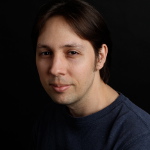 David J Peterson |
Advice for Professional ConlangersIn this short talk, David will offer advice to conlangers seeking to work professionally, be it in a big budget Hollywood film or for someone who hopes to start working on a huge fantasy novel some day soon. |
| David J. Peterson has been creating languages for fifteen years. He’s the creator of the Dothraki and Valyrian languages for HBO’s Game of Thrones, and has created languages for several other television shows and films (Syfy’s Defiance, the CW’s The 100, Marvel’s Thor: The Dark World). | |
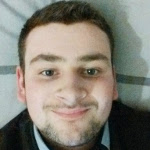 David Tait |
The Inflection of the Eldich LanguageMy proposal is to talk about the inflectional patterns in my Eldich language. I will begin by talking about the external development of the language and how I have evolved it into its present form, and presenting the current typological features found in the language, and then a little on the fictional history and setting. I will go on to discuss the morphological features in the current form: firstly about nouns and the 5 genders and 5 grammatical cases. I will then move on to talk about verbs, introducing strong verbs and the development of the ablaut which is present within the language and how they are conjugated. I shall then describe weak verbs and their two different conjugations for both static and dynamic forms. From this, I will demonstrate the use of the static verbs with the accusative case and the dynamic verbs with the dative. |
| David Tait started conlanging when he was 11, after his father took me to see the Lord of The Rings films for the first time and he was deeply inspired by Tolkien’s Elvish languages. A few months later, he began to develop his own language in the back of the car. He pressed a piece of A4 paper up against the window and wrote the first primitive lexicon for the Hopyratian language, then called Hopra. Later, he discovered Esperanto and began to immerse himself into the linguistic world at the age of 13. A year later, he began to read The Language Construction Kit by Mark Rosenfelder which took him to whole new level of linguistics, introducing him to phonetics, phonology, morphosyntax and to the full beauty of grammar. Since then he has been developing conlangs, inspired by the many natlangs he has studied, and also by many other renowned conlangs, such as Na’vi and High Valyrian. He creates languages to add to the conworld Sepistania, and to drive his passion for languages as far as he can. | |
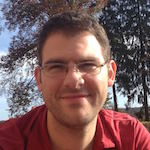 Christian Thalmann |
Jovian and the Joys of RomlangingThe creation of a Latin-based a-posteriori language, or romlanging for short, is a phase many conlangers go through at some point in their career, and most of them eventually outgrow it. In my talk, I will present my view on how romlanging can stand the test of time and remain challenging and rewarding even after a decade of conlanging by focusing on the advanced-level aspects of conlanging — diachronics, idioms, social register, poetry — that a-priori conlangs can only support after months and years of preparatory groundwork. I will illustrate these points with examples from my own decade-old romlang, Jovian. |
| Christian Thalmann (also known as Zhalio on the Dothraki boards) is a Swiss astrophysicist and old-time member of the CONLANG-L mailing list. His conlangs include Jovian, Obrenje, and Oro Mpaa. | |
 Britton Watkins |
Conlanging in FilmsThis presentation will feature personal experiences related to how learning Na’vi from the 2009 film Avatar led to onset dialogue coaching in Klingon for the film Star Trek Into Darkness. This onset work in turn contributed to the birth of the 2014 film, Senn. The primary conlang in that film—Siinyamda—will be shown and explained during the talk in the 20-minute short documentary Making Siinyamda. |
| Britton Watkins has been a member of the LCS for roughly 2 years. He spent 8 years of his professional life in Japan (working in Japanese). His ‘real job’ is as an international market strategy consultant for companies like Adobe, Sony, and Netflix. He has studied Thai and Mandarin—he still remembers some Spanish from his teenage years—and dabbles in Cherokee. He cowrote, coproduced, and created the conlang Siinyamda for the film Senn (sennition.com), which he made with his husband, Josh. He is currently under commision to create an alien language for a graphic novel and has begun his next film project, a documentary on constructed langaguges. Britton and Josh live in San Francisco and Sonoma County, California with their two cats, Sy and Dex. | |
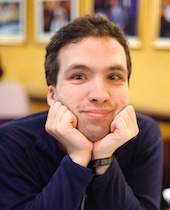 Sai |
Conlanging and US Intellectual Property LawTo what extent are constructed languages and writing systems protected by Copyright, patent, and trademark law all potentially apply to conlangs. However, there are many limitations and requirements for each that, applied to conlangs, bring up unique issues that have rarely (if ever) been clearly tested in court. Thanks to generous pro bono work from the law firm Dentons US LLP, the Language Creation Society has gotten a informational background memorandum addressing these issues, which we are now making public. This talk, based on the memo, discusses the basics of intellectual property law in the US, how it may or may not apply to conlangs, some pragmatic take-aways, and Q&A. Disclaimer: Sai is not a lawyer (yet), not your lawyer, and definitely not giving any legal advice or opinion. The memo is written by the LCS’ lawyers, but they are not your lawyers, and it is not legal advice. The memo and talk only cover IP law within the United States. If in doubt, please read the memo for yourself, or hire a lawyer. |
| Sai is the founder and former president of the Language Creation Society. Sai has an affinity for engelangs that push the boundaries of language, and is the co-creator (with Alex Fink) of Gripping, a tactile language, and UNLWS, a two-dimensional non-linear purely written language. Photo credit: Julia Wolf (@juliavixen) | |
